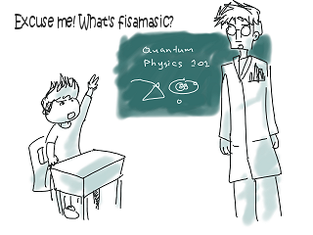TPE 6: Developmentally Appropriate Teaching Practices
|
Differentiated Learning
Students in the classroom are all going to be different. Some are going to come in knowing a lot of things in life and little academic knowledge, while others will come in with a lot of academic knowledge and little exposure to life experiences. It is then the responsibility of the teacher to provide lessons where the entire student body can learn and do regardless of their learning differences and abilities. Lessons such as these are difficult to create and assess as the differences between the students varies greatly. Effective Strategies Some teachers stand by a certain strategy because it works for them and it makes them feel comfortable. Often times, the methods that we feel comfortable with are the ones that we grew up learning best under. However, as a teacher it is best to understand that not all of your students are going to learn like the way you learn and teach. Instead it is better to offer a variety of methods for students to learn and utilize their strength in the way they learn best. Multiple Intelligence and Learning Styles One of the most effective ways to teaching to different types of students is to focus on certain Multiple Intelligence as proposed by Howard Gardner. His eight multiple intelligences allows for students who are strong in a certain area to excel at that specific activity. For instance, a student who is musically intelligent may learn that music and mathematics go very well with each other and thus can compose a song about a math process such as the quadratic formula in order to learn how to use the formula. Another focus that a teacher can do is to hit all the three major learning styles: visual, auditory, and kinesthetic. If a teacher is to provide all three of these learning style in each lesson, the student is bound to pick up the information from one or a combination of the three information sources. Sign of the Beaver - Personality versus physical traits The students have been reading a book called Sign of the Beaver and one of the standards that students have to know is to distinguish between a physical characteristic of a character to that of their personality trait. Instead of verbally telling the students what the traits are, I had the students move around and write about their own physical traits and the personality traits of their fellow students. Students are learning the lessson, but the lesson is approached in a different manner because it allows for the students from the higher performing student to the satisfactory fulfiling student to operate and contribute on the same paper. For instance, a student who is verbose in their language would use words that describes how the character portrays their traits, while an English Learner might state that the character is friendly because he shares his food. |
| CA- CCTC: TPE's (Teaching Performance Expectations) |
| Standard : A. Making Subject Matter Comprehensible to Students |
| TPE : TPE
1: Specific Pedagogical Skills for Subject Matter Instruction TPE 1 is divided into two categories intended to take into account the differentiated teaching assignments of multiple subject and single subject teachers. Multiple subject credential holders work in self-contained classrooms and are responsible for instruction in several subject areas; single subject teachers work in departmentalized settings and have more specialized assignments. These categories are Subject-Specific Pedagogical Skills for Multiple Subject Teaching Assignments (1-A), and Subject-Specific Pedagogical Skills for Single Subject Teaching Assignments (1-B). |
| Component : TPE 1A: Subject-Specific Pedagogical Skills for Multiple Subject Teaching Assignments |
|
Standard Area : Teaching
Reading-Language Arts in a Multiple Subject Assignment Candidates for a Multiple Subject Teaching Credential demonstrate the ability to teach the state-adopted academic content standards for students in English-Language Arts (K-8). They understand how to deliver a comprehensive program of systematic instruction in word analysis, fluency, and systematic vocabulary development; reading comprehension; literary response and analysis; writing strategies and applications; written and oral English Language conventions; and listening and speaking strategies and applications. They know how to strategically plan and schedule instruction to ensure that students meet or exceed the standards. Candidates create a classroom environment where students learn to read and write, comprehend and compose, appreciate and analyze, and perform and enjoy the language arts. They understand how to make language (e.g., vocabulary, forms, uses) comprehensible to students and the need for students to master foundational skills as a gateway to using all forms of language as tools for thinking, learning, and communicating. They understand how to use instructional materials that include a range of textual, functional and recreational texts and how to teach high quality literature and expository text. They understand that the advanced skills of comprehending narrative and informational texts and literary response and analysis, and the creation of eloquent prose, all depend on a foundation of solid vocabulary, decoding, and word-recognition skills. Candidates teach students how to use visual structures such as graphic organizers or outlines to comprehend or produce text, how to comprehend or produce narrative, expository, persuasive and descriptive texts, how to comprehend or produce the complexity of writing forms, purposes, and organizational patterns, and how to have a command of written and oral English-language conventions. They know how to determine the skill level of students through the use of meaningful indicators of reading and language arts proficiency prior to instruction, how to determine whether students are making adequate progress on skills and concepts taught directly, and how to determine the effectiveness of instruction and students’ proficiency after instruction. |

